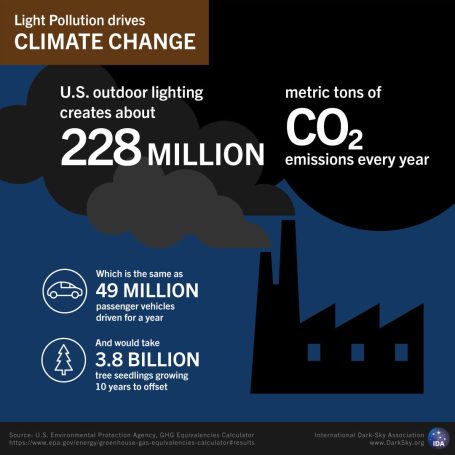Light Pollution
Light pollution is just one of the many problems facing our world,
but this is one problem we can all do something about,
and it's not that hard.

"Northern"Lights from Medlow road, Uleybury SA, taken by Anthea Wills May 11 2024
"As far as we can tell, our planet is the only place in all the black immensities of the universe where life exists. We are alone in space, and the continued existence of life now rests in our hands."
Sir David Attenborough,
The Living Planet

Protect the Night
It's good for us, good for wildlife and good for the environment.
In my youth I was fortunate to be able to travel by land and sea to some of the darkest places in South Australia and see the night skies in their glory. The awe of fellow travelers will remain etched in my memory as some saw the stars at night for the first time.
We live in a time where for some, light pollution is a sign of progress, something that should be embraced. For others bright light is a sign of safety, dispelling the dark to avoid the nasties that might lurk, but contrary to popular belief, bright lighting at night does not improve safety. (https://www.darksky.org/wp-content/uploads/2014/09/Chicago-Alley-Lighting-Project.pdf)
In reality the increase in light pollution is another sign of the damage to our planet. Every bit of light that lights up the sky is wasted light and wasted power and comes with a huge cost to our ecosystems. Many animals, including dung beetles, which though small, are a vital part of the ecology, navigate by the stars. Blot these out with light pollution and the dung beetle loses its way.
Life on earth evolved around a day night pattern. Artificial light at night is disruptive not just to our own human circadian rhythms, but to that of our bird, insect and wildlife. For some species, this is deadly.
In 2022 we watched the November 8th lunar eclipse from our local park. The lighting around the local shopping centre was very disruptive, but we noted that the lighting in the park around the playground and basketball court was set to a sensor. It was dim while we sat quietly in relative darkness but lit up brightly when we moved around. The lights were directed down and would be considered dark sky friendly.
This type of lighting is not only dark sky friendly, but is also far better for energy conservation, saving the council money in power use. This in turn has benefits for our own pockets and is another way to tackle climate change by reducing the amount of wasted light, and thereby reducing power consumption.
The Dark Sky campaign is slowly gaining an awareness. South Australia is at the forefront of this by having the first recognised International Dark Sky Reserve in Australia here in the Murrylands only 90 minutes from the CBD. We also have the Arkaroola Dark Sky Sanctuary in the Flinders Ranges, and the Carrickalinga Dark Sky Community, in the southern Fleurieu Peninsula. the South Australia is well placed to promote this area for dark sky tourism and education.
Is it a dream that with enough political will, this could be rolled across the entire state, giving South Australia as a whole, the leading edge on dark sky tourism, for the benefit of the planet, astronomy, and ecology, by simply changing the way we light our city?



Examples of light pollution
Astronomical events marred by overpowering levels of local lighting.

May 11 2024 Aurora
Streetlights turn night into day in our local area. But despite this level of light pollution, the Aurora is still visible.

November 8 2022 Lunar Eclipse
The view of the moon is almost obscure by the shopping centre's lights. The rooftop lighting points into the sky.
Losing the Dark
Losing the Dark is a joint production of DarkSky and Loch Ness Productions.
Resources
What can we do?
Reducing light pollution is not difficult, but it does take will and imagination.
Reducing light pollution does not mean less safety on streets, but utilising our
lighting in a more targeted and responsible manner.
There are many resources to explain how we can all work to reduce light pollution.
Visit the following links for more information

The following graphics are U.S. statistics, but the principle is the same for Australia
Click on the images below for full size view
© Copyright 2024 The Loaded Spinningwheel.
We need your consent to load the translations
We use a third-party service to translate the website content that may collect data about your activity. Please review the details in the privacy policy and accept the service to view the translations.





